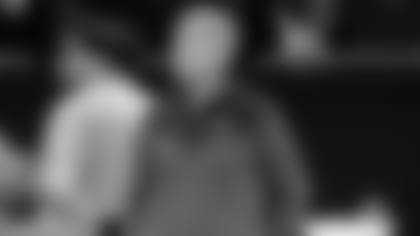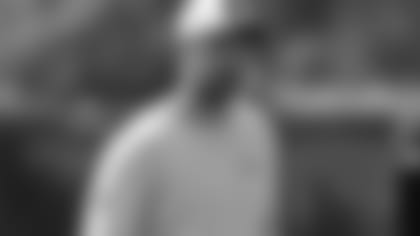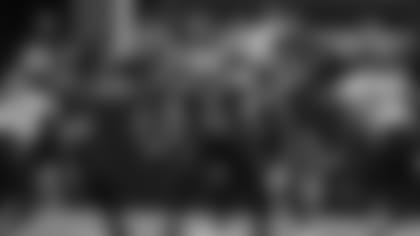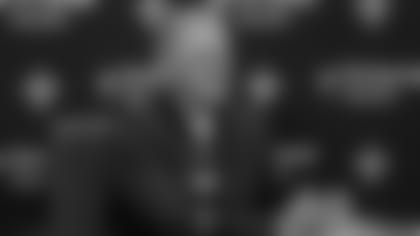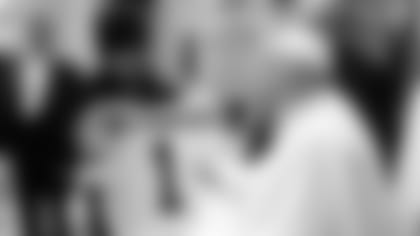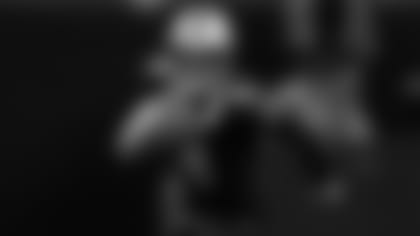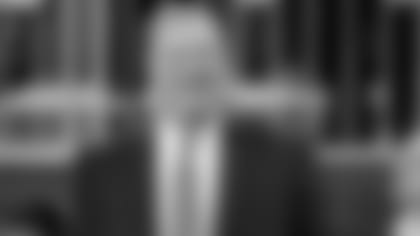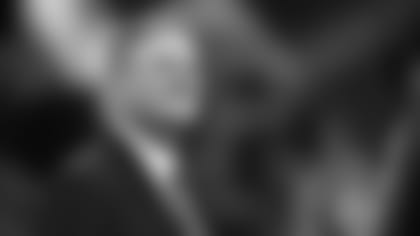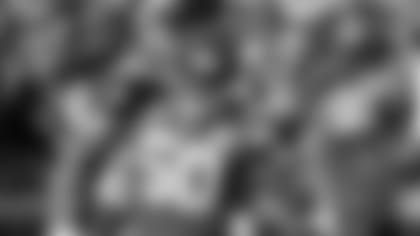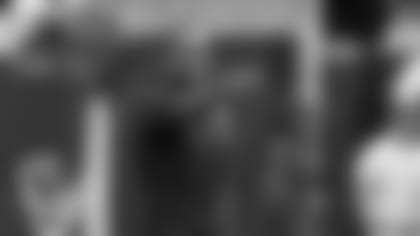On Wednesday, tight end Foster Moreau, a New Orleans native aspiring to join his hometown New Orleans Saints as an unrestricted free agent, announced he would be stepping away from football after being diagnosed with Hodgkin's lymphoma.
On Sept. 7, 2017, long snapper Jon Dorenbos, whom the Saints recently had acquired in a trade with Philadelphia and who played in a preseason game for New Orleans, announced he had an aortic aneurysm that would require immediate surgery and end his NFL career.
Different diagnoses, years apart, with a common denominator: John Amoss, the Saints' team doctor whose specialty is as an internist.
"Look, I don't have any special powers, but I am thorough, I do do things with thought," Amoss said. "And I think a lot of times, when you see lots and lots of people, you kind of tend to go through the motions sometimes. That's one thing you've got to guard against as a doctor, is just going through the motions and not doing things with thought. And I guess serendipity has something to do with it, too.
"But we've been fortunate. Foster is going to do great, I really believe that. He's got a great prognosis and I think he's going to do great, and I think he's going to get back on the field in a year."
It's possible that Dorenbos and Moreau could have received their diagnoses elsewhere. Amoss quickly dispels the notion that anyone was "wrong" previously, or that either player received improper care.
"This is not anything against any doctor that saw Foster before this," he said. "If Foster were on the Saints, I wouldn't have examined Foster at the end of the season as the team doctor. It would have been the physical in May that we do.
"This was probably not detectable back then and if a player isn't saying, 'Hey Doc, I've got this lump,' you're not going to do a physical on him. So you can't say anyone missed anything. It's just, the timing was right where he came to me and I'm doing my routine exam and finding something that probably wasn't detectable back in May when he got his physical (with the Raiders)."
Amoss said that Moreau had no specific complaints of discomfort.
"Just in my routine exam, I always feel for glands," he said. "It's just what I do. I felt this abnormal gland and it's like, 'Have you ever noticed this before?' He's like, 'No.' And I said, we've got to check this out.
"We got a CT scan immediately (March 18), 45 minutes after my exam started and we were biopsying this node because it played out that way where we could get the scan really quickly, and the radiologist was one who does biopsies. And we biopsied him right then and there after explaining the whole situation and showing the scans, and being very sensitive to him because this is like, you can imagine he's thinking he's going to sign with his hometown team, and now we're saying this looks like you've got lymphoma and this is really serious and needs to be biopsied.
"To Foster's credit, he just really was so mature about it. Wasn't panicky, but obviously, appropriately concerned. So we biopsied it then, and it actually takes three days for it to be processed to where a pathologist could look at it and say it was Hodgkin's. But we very much suspected that it was either going to be Hodgkin's or non-Hodgkin's lymphoma."
In Dorenbos' case, after playing 11 seasons and a franchise-record 162 consecutive games with the Eagles, detection was much more nebulous.
"Jon had a very difficult to hear murmur, (and) that's sort of in my strike zone in terms of my strength," Amoss said. "I'm very good at listening to murmurs, always have been, always been interested in it and almost became a cardiologist and decided at the end, I think I'll do all of medicine because I like it all. That led to the finding of the aneurysm, which is associated with his kind of problem."
Dorenbos was advised to try not to cough, among other routine things. His playing career was over.
"My mom died when I was 12, her best friend sang 'Wind Beneath My Wings' at her funeral," Dorenbos said in an interview on the Saints' team podcast in December 2020. "And so, when this whole thing played out, I remember I got the test with Doc and I went back to my locker.
"Career is over and my life had just gone through a sudden shift. I'm a firm believer that the story you tell yourself, the things you tell yourself, it makes a difference in how you're going to come out of any situation. So, Drew Brees walked by, and I remembered my mom's friend singing 'Wind Beneath My Wings.' The story I told myself is, my mom basically said, hey, it's time to step out of the wind to catch a breeze. Drew Brees was my breeze. I was traded to New Orleans to have my life saved by a Saint, Doc and the whole crew there.
"That's the story I told myself and it kind of put everything at ease. It was one of those situations where I was right where I belonged, right when I should be. I only spent a few days there, I was so excited to play for the Saints, I was so excited for change. I didn't really realize how excited I was until I got there. Probably the biggest disappointment that I had personally in my career was that I never got to play longer in New Orleans.
"I say this all the time, I thank Doc every day. I wake up, I'm alive. It just shows that it doesn't matter what position you're in, it doesn't matter who you are, if you do what you love to do and you care about what you do and you become a true pro, you become a master of your craft, there is nothing that is insignificant. There's nothing that you shouldn't learn. I'm glad he paid attention that day in class.
"I'm just so thankful that he was there. I thank the lucky stars every single day that he was disciplined and he trusted his gut. He basically had the best interests for me, and I'm forever thankful for that. I'm just happy to be alive."
On the same podcast, Amoss said Dorenbos' gratitude immediately was evident.
"When he saw me the next day and he'd been told his career was over and he was going to need open heart surgery within a week, most people would be a little bit thankful but also a little bit peeved at the doctor who basically ruined their career," Amoss said.
"Jon saw me from across the training room and he said, 'There's my best friend right there. That's my best friend.' And he came over and gave me a big bear hug, and said, 'Thank you so much. Thank you so much.' Pretty incredible testament to who Jon is and how he handles life."
Both Moreau and Dorenbos now expect to carry on productive lives, thanks in part to Amoss' inquisitiveness.
"Both of them, to their credit, were very thankful," Amoss said. "Some people, you can tell them this and they're angry at you, because you're the person that's finding something that could be life-threatening, and it's a natural human response. But both of them were just incredibly thankful and grateful, which is a wonderful thing to have a patient tell you that.
"Even though you know you're doing the right thing, some people get angry. But they were both, almost immediately, just thankful that we did our due diligence and we picked this up. And they're going to beat it now.
"They're competitive people that are like, 'OK, I've had a lot of curveballs thrown at me in life, this is another curveball and I'm getting over this.' Jon Dorenbos certainly did and I'm confident Foster will also."



